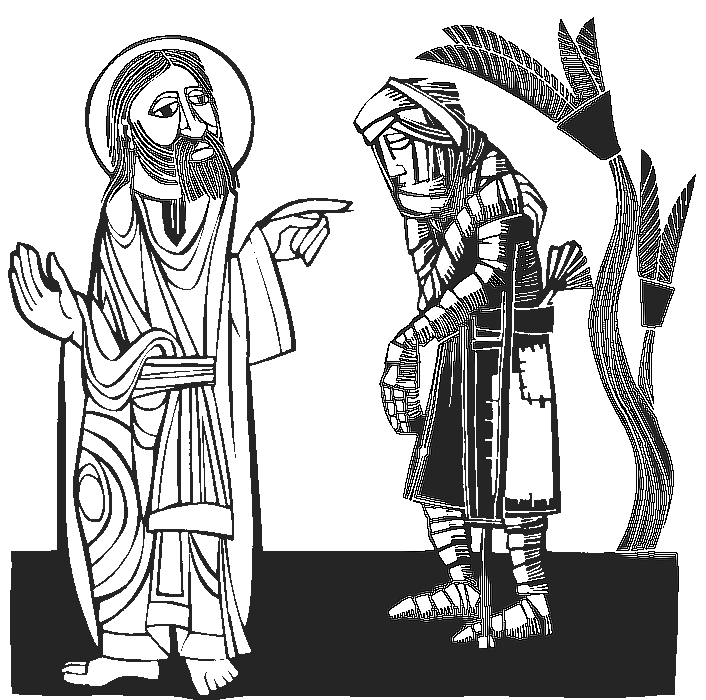Getting Ready to Pray
We live the Eucharist as a mission. The Body of Christ is alive as we move out and toward his sisters and brothers. During our Eucharistic journeys we encounter bumps in the road. We would wish it were smooth and easy to live.
We pray these days of Eucharistic living for the grace to have clean hearts. We pray for the freedom to touch what calls to us for healing. We pray as well for the honesty to have our uncleanliness touched by God. We can pray to reach those who are considered outside the camp, outside the circle, but who, by Christ’s touch, are in the Eucharistic pale.
We pray as well to trust God’s good time in healing us from our sores, bumps, rashness boiling-overs, and various physical and emotional injuries experienced during our journeys. We also pray for the grace to join Jesus in his ways of reaching out to those who are injured, sick, or alienated.
Some Thoughts
We hear in the First Reading only a few verses from two whole chapters from Leviticus dealing with one specific topic, leprosy. This book, one of the first five books of the Hebrew Scriptures, deals mostly with laws contributing to proper order in the camp resulting from God’s direct word through Moses and or Aaron.
The original garden of perfection was a picture of orderliness, everything had its name and proper place. Any imperfection, or something out of place was ungodly and so unholy.
The person who was judged to have disease by the priests would have to walk around shouting their identity as “unclean” and live according to that name. In the next chapter of Leviticus there is a description of quite an extended process of examination, purification and restoration back into the community.
When reading that, one might choose to stay in the previous condition of leprosy.
The Gospel has some interesting features. The “unclean” man, instead of keeping his distance according to the tradition and the law, came to Jesus for healing. Jesus did touch the man, not keeping his distance either. The physical healing took place as an act of faith. The man is told to go and show himself to the priests and offer what Moses prescribed.
The man, cured, is now in the camp, and Mark states clearly that Jesus stayed outside in deserted places so as to remain available for further healings. He remains an outsider welcoming people back in harmony with God and themselves.
What Jesus did most for this man was to change his identity from being “unclean” to being present in the community of the Good News. What Jesus does most in our lives as Savior is to restore our good-enough-to-share self. We might have only one paint can, one color, maybe not filled to the brim and a smaller brush than others. But Jesus paints our world with his color and invites us back always, into his camp, this world.
We come to him, kneel down and after admitting our truth, Jesus’ constant words are “I do will it,” his missioning healing response. We will know his healing when we want to get up, get back in, and start painting again.
They ate and had their fill, and what they craved the Lord gave them; they were not disappointed in what they craved.
Psalm 78:29-30




